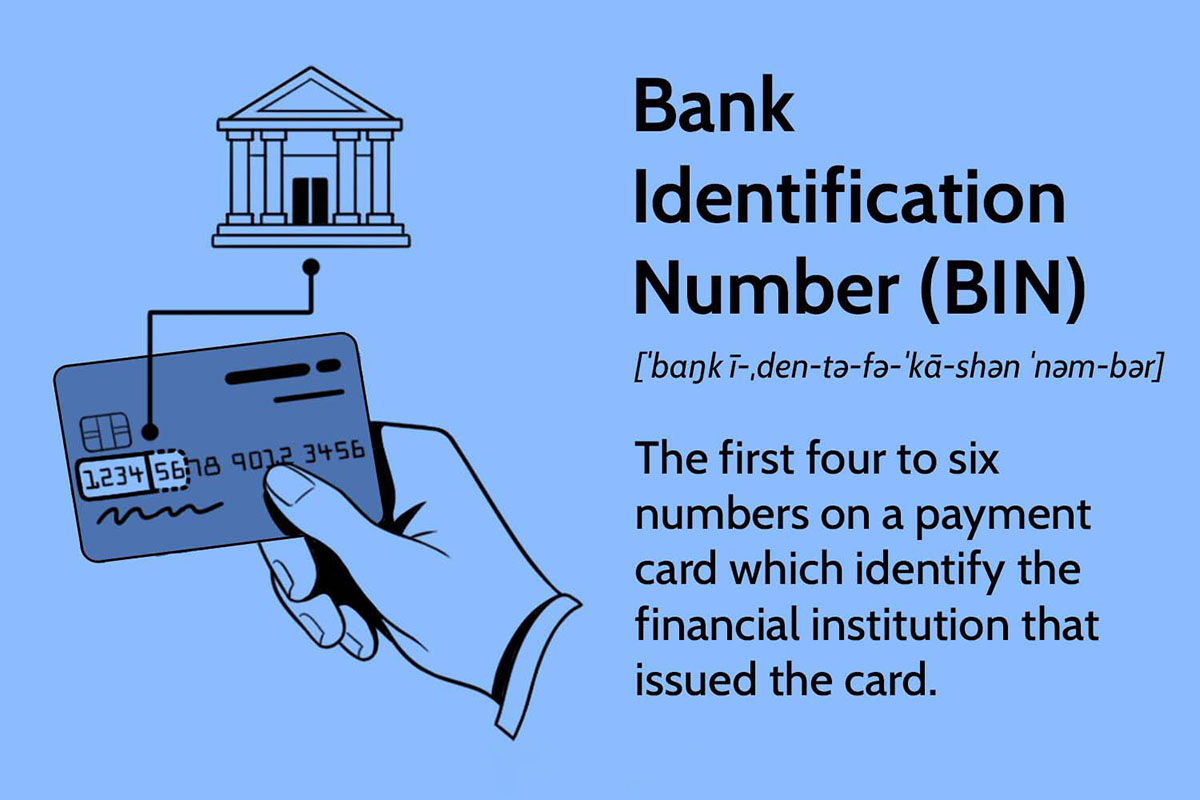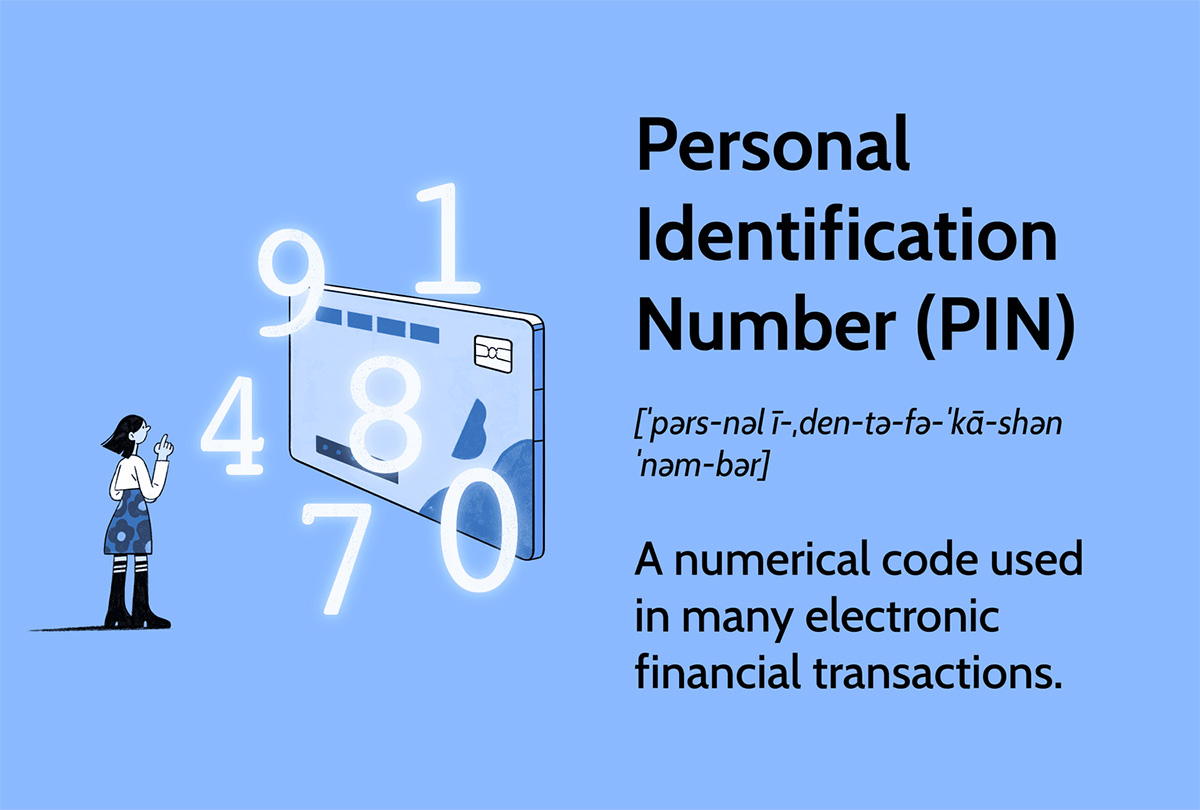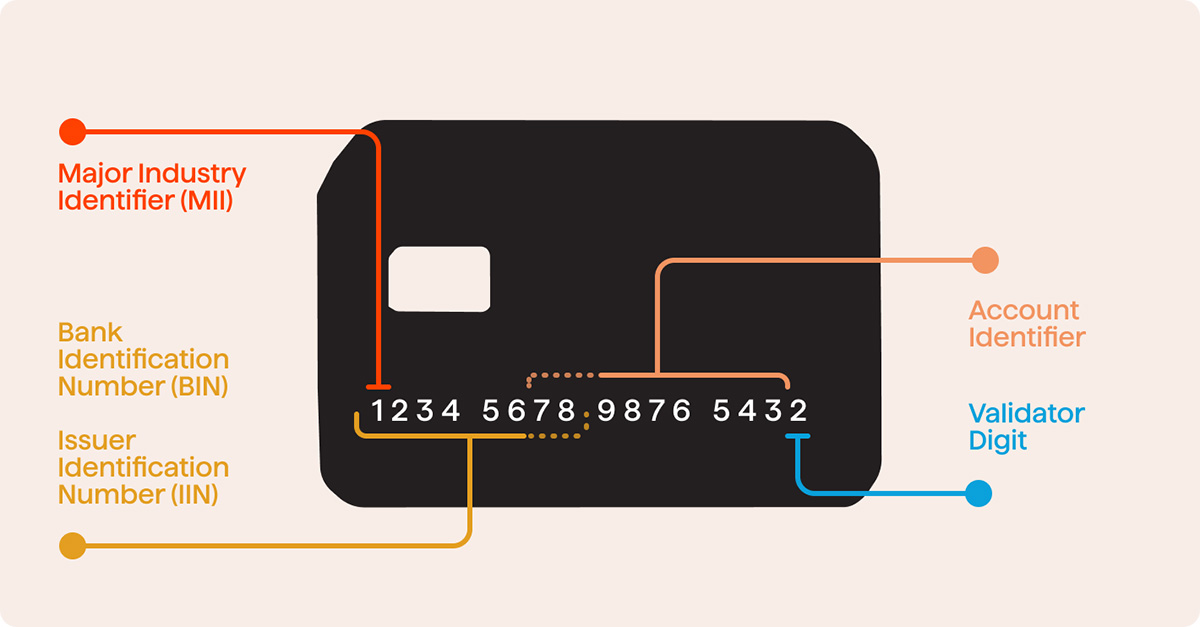

Finance
How To Find Transaction Hash ID On Blockchain
Published: October 23, 2023
Learn how to find transaction hash ID on the blockchain and track your finance activities with ease. Discover the easiest way to navigate the world of blockchain transactions and manage your finances efficiently.
(Many of the links in this article redirect to a specific reviewed product. Your purchase of these products through affiliate links helps to generate commission for LiveWell, at no extra cost. Learn more)
Table of Contents
Introduction
In the world of blockchain technology, transactions are at the core of every financial activity. Whether you are sending or receiving funds, buying or selling cryptocurrencies, or participating in decentralized finance (DeFi) protocols, each transaction leaves a unique digital footprint known as a Transaction Hash ID.
A Transaction Hash ID, also referred to as a Transaction Hash or TxHash, is a string of alphanumeric characters that serves as a digital signature for a specific transaction on the blockchain. It acts as a unique identifier, allowing users to easily track and verify the details of a transaction.
The Transaction Hash ID is generated using a cryptographic hash function, such as SHA-256, which takes as input the information related to the transaction, such as the sender, receiver, timestamp, and transaction amount. By applying this function, a unique and irreversible hash is created, which becomes the Transaction Hash ID.
The importance of the Transaction Hash ID cannot be overstated, as it provides transparency, immutability, and security to financial transactions on the blockchain. It ensures that every transaction is recorded and can be audited, allowing users to verify the authenticity of transactions and detect any attempts at tampering or fraud.
In this article, we will explore the various ways to find a Transaction Hash ID on the blockchain. Whether you are a beginner navigating your first cryptocurrency transaction or a seasoned investor tracking complex DeFi transactions, understanding how to find and interpret the Transaction Hash ID is essential for staying informed and ensuring the integrity of your financial activities.
What is a Transaction Hash ID?
A Transaction Hash ID, also known as a Transaction Hash or TxHash, is a unique identifier that represents a specific transaction on the blockchain. It is a string of alphanumeric characters that serves as a digital signature for the transaction, allowing users to easily track and verify its details.
When a transaction is initiated on the blockchain, whether it is sending or receiving funds, purchasing or selling cryptocurrencies, or participating in decentralized applications, it is recorded as a block in the blockchain ledger. Each block contains a set of transactions, and to ensure the security and integrity of the network, each transaction is assigned a unique Transaction Hash ID.
The Transaction Hash ID is generated using a cryptographic hash function, which takes as input the transaction details, such as the sender, receiver, timestamp, and transaction amount. The hash function then processes this information and produces a unique, fixed-length string of characters that represents the transaction. This hash is irreversible, meaning it cannot be reversed back to its original input, providing tamper-proof security to the transaction.
The Transaction Hash ID serves several important purposes:
- Uniqueness: Each transaction has a different Transaction Hash ID, ensuring that no two transactions on the blockchain can have the same identifier. This uniqueness enables easy identification and differentiation between transactions.
- Verification: The Transaction Hash ID allows users to verify the authenticity and integrity of a transaction. By comparing the Transaction Hash ID with the recorded transaction details, users can ensure that the transaction has not been altered or tampered with.
- Trackability: With the Transaction Hash ID, users can easily track the progress and status of a transaction on the blockchain. By searching for the Transaction Hash ID in a blockchain explorer or wallet application, users can view details such as the transaction amount, sender, receiver, and timestamp.
- Auditing: The Transaction Hash ID plays a crucial role in auditing and transparency on the blockchain. It allows anyone to independently verify and audit transactions, ensuring accountability and reducing the risk of fraudulent activities.
Overall, the Transaction Hash ID is a fundamental component of the blockchain ecosystem, providing transparency, security, and traceability to every financial transaction. Understanding how to find and interpret the Transaction Hash ID is key to effectively participating in the blockchain economy.
Importance of Transaction Hash ID
The Transaction Hash ID is a critical element in the world of blockchain technology and holds immense importance for various reasons. Let’s explore why the Transaction Hash ID is so essential:
1. Verification and Integrity: The Transaction Hash ID allows users to verify the authenticity and integrity of a transaction. By comparing the Transaction Hash ID with the recorded transaction details, users can ensure that the transaction has not been tampered with or altered. This provides a high level of trust and transparency in the blockchain ecosystem.
2. Security: With the Transaction Hash ID, the blockchain ensures the security of financial transactions. Each transaction is assigned a unique identifier, making it nearly impossible to duplicate or forge transactions. The irreversible nature of the Transaction Hash ID adds an additional layer of security, making it extremely difficult for malicious actors to manipulate or alter transaction records.
3. Trackability: The Transaction Hash ID enables users to easily track the progress and status of a transaction on the blockchain. By searching for the Transaction Hash ID in a blockchain explorer or wallet application, users can view details such as the transaction amount, sender, receiver, and timestamp. This trackability feature provides real-time updates and insights into the transaction’s lifecycle.
4. Auditing and Accountability: The Transaction Hash ID plays a crucial role in auditing and ensuring accountability on the blockchain. It allows anyone to independently verify and audit transactions, ensuring that all transactions are recorded accurately and transparently. This enhances trust among participants and reduces the risk of fraudulent activities.
5. Dispute Resolution: In case of any disputes or discrepancies, the Transaction Hash ID serves as an irrefutable piece of evidence. With the Transaction Hash ID, users can trace back the entire history of a transaction, providing a clear picture of its origin, destination, and intermediaries involved. This facilitates efficient and fair dispute resolution processes.
6. Integration with External Systems: The Transaction Hash ID can be linked and integrated with external systems and applications. This integration allows businesses and organizations to connect their internal operations with the blockchain network, enabling streamlined and secure financial transactions.
Overall, the Transaction Hash ID is a vital component of the blockchain ecosystem, providing trust, security, and transparency to financial transactions. It ensures the integrity of the blockchain by allowing users to verify transactions, track their progress, and hold participants accountable. Understanding and effectively utilizing the Transaction Hash ID is essential for individuals, businesses, and organizations operating in the blockchain space.
Ways to Find Transaction Hash ID
There are several methods to find the Transaction Hash ID for a specific transaction on the blockchain. Here are some common ways:
Method 1: Using Blockchain Explorer: One of the most accessible ways to find a Transaction Hash ID is by using a blockchain explorer. A blockchain explorer is a web-based tool that allows users to search and view transaction details on a specific blockchain network. Simply enter the wallet address or transaction details in the search bar of the blockchain explorer, and it will display the associated Transaction Hash ID along with other transaction information.
Method 2: Using Wallet or Exchange History: If you initiated the transaction using a wallet or cryptocurrency exchange, you can usually find the Transaction Hash ID within your account’s transaction history. Simply navigate to the transaction history section of your wallet or exchange, locate the specific transaction, and the Transaction Hash ID should be provided.
Method 3: Obtaining Transaction Receipt: Some blockchain networks, such as Ethereum, generate transaction receipts that contain the Transaction Hash ID. If you have initiated a transaction and received a confirmation or receipt, the Transaction Hash ID should be included in that document. Check your email, transaction history, or the platform you used to initiate the transaction to locate the receipt containing the Transaction Hash ID.
Method 4: Contacting Customer Support: If you are unable to find the Transaction Hash ID using the above methods, reaching out to the customer support team of the platform or service you used to initiate the transaction can be helpful. Provide them with details of the transaction, such as the date, time, and transaction amount, and they should be able to assist you in retrieving the Transaction Hash ID.
It’s important to note that the availability and accessibility of the Transaction Hash ID may vary depending on the blockchain network and the service or platform you used for the transaction. Some blockchain networks may have additional methods or tools specific to their ecosystem for finding the Transaction Hash ID.
By utilizing these methods, you can easily find the Transaction Hash ID for your specific transaction on the blockchain. Having the Transaction Hash ID at hand allows you to verify the transaction, track its progress, and ensure the integrity and security of your financial activities on the blockchain.
Method 1: Using Blockchain Explorer
One of the most straightforward ways to find a Transaction Hash ID is by using a blockchain explorer. A blockchain explorer is a web-based tool that allows users to search and view transaction details on a specific blockchain network. Here’s how you can find the Transaction Hash ID using a blockchain explorer:
- Choose a blockchain explorer: Different blockchain networks have their own blockchain explorers. For example, you can use blockchain explorers like Etherscan for Ethereum, Blockchain.com for Bitcoin, or BscScan for Binance Smart Chain. Choose a reputable and widely used blockchain explorer for the network on which your transaction occurred.
- Access the blockchain explorer: Once you have selected a blockchain explorer, visit its website via your preferred web browser.
- Enter transaction details: On the blockchain explorer’s website, locate the search bar or transaction search function. Enter the relevant details to find the Transaction Hash ID. The required information typically includes the wallet address associated with the transaction, the block number, or any other identifying information provided by the explorer.
- Retrieve the Transaction Hash ID: After submitting the required information, the blockchain explorer will search the blockchain network and display the transaction details, including the Transaction Hash ID. The Transaction Hash ID is usually a long string of alphanumeric characters. Take note of this ID for future reference.
- Review transaction details: Alongside the Transaction Hash ID, the blockchain explorer will provide additional details about the transaction, such as the sender’s and receiver’s addresses, timestamp, transaction amount, and any associated fees. This information allows you to verify the transaction’s authenticity and track its progress on the blockchain.
Using a blockchain explorer is a reliable method to find the Transaction Hash ID for a specific transaction. It provides transparency and allows you to independently verify the details of your transaction. Additionally, blockchain explorers often offer advanced features, such as tracking the confirmations, viewing the transaction’s status, and exploring the transaction history.
Remember to choose a trusted and reputable blockchain explorer to ensure accurate and up-to-date information. By utilizing this method, you can easily find the Transaction Hash ID and gain valuable insights into your transactions on the blockchain.
Method 2: Using Wallet or Exchange History
If you initiated a transaction using a wallet or cryptocurrency exchange, you can often find the Transaction Hash ID within your account’s transaction history. Here’s how you can find the Transaction Hash ID using your wallet or exchange history:
- Access your wallet or exchange account: Open the wallet or log in to your cryptocurrency exchange account that you used to initiate the transaction.
- Navigate to transaction history: Look for the transaction history section of your wallet or exchange account. This section usually provides a comprehensive list of your past transactions.
- Search for the specific transaction: In the transaction history, locate the specific transaction for which you need the Transaction Hash ID. The transactions are typically listed in chronological order, with the most recent transactions shown first.
- Retrieve the Transaction Hash ID: Once you have found the transaction, the associated Transaction Hash ID should be displayed. The Transaction Hash ID can vary in format depending on the platform, but it is usually a long string of alphanumeric characters.
- Review transaction details: Alongside the Transaction Hash ID, your wallet or exchange history may provide additional information about the transaction, such as the sender’s and receiver’s addresses, timestamp, and transaction amount. Take note of these details as they can help verify the transaction’s authenticity.
By utilizing your wallet or exchange history, you can quickly find the Transaction Hash ID for your specific transaction without the need for external tools. This method offers convenience as the Transaction Hash ID is readily available within your account’s transaction records.
It’s important to note that different wallets or exchanges may have different layouts or terminologies for their transaction history sections. However, the process of locating the Transaction Hash ID should be similar across most platforms.
Keep in mind that some wallets or exchanges may only provide the Transaction Hash ID for recent transactions. If you need the Transaction Hash ID for an older transaction, you may need to employ alternative methods, such as using a blockchain explorer or obtaining transaction receipts.
By using your wallet or exchange history, you can easily find the Transaction Hash ID, allowing you to track and verify the details of your transactions within your account.
Method 3: Obtaining Transaction Receipt
Some blockchain networks, such as Ethereum, generate transaction receipts that contain the Transaction Hash ID. If you have initiated a transaction and received a confirmation or receipt, the Transaction Hash ID should be included in that document. Here’s how you can obtain the Transaction Hash ID through a transaction receipt:
- Check your email or notifications: If you have provided your email address during the transaction process, check your inbox or spam folder for any transaction-related emails. Cryptocurrency exchanges or wallets often send transaction confirmations or receipts that contain the Transaction Hash ID. Look for emails related to the specific transaction and open them to retrieve the Transaction Hash ID.
- Review platform notifications: Some wallets or exchanges may provide transaction notifications within their platform. These notifications often contain the Transaction Hash ID as part of the confirmation message. Access your wallet or exchange account and navigate to your notifications or activities section to find the transaction-related notifications.
- Locate the transaction receipt: Transaction receipts are commonly generated after completing a transaction on blockchain networks. If you have received such a receipt, it may contain the Transaction Hash ID. Check the transaction history or confirmation section of the platform you used for the transaction to find the receipt. Once located, open the receipt to obtain the Transaction Hash ID.
- Verify transaction details: Besides the Transaction Hash ID, the transaction receipt may include additional information about the transaction, such as the sender’s and receiver’s addresses, timestamp, and transaction amount. Review these details to ensure that they match your intended transaction.
Transaction receipts provide an official record of the transaction, and they are typically considered reliable sources for retrieving the Transaction Hash ID. However, keep in mind that not all blockchain networks or platforms automatically generate transaction receipts. In such cases, you may need to rely on other methods, such as using a blockchain explorer or contacting customer support.
By obtaining the transaction receipt, whether through email, platform notifications, or wallet/exchange confirmation sections, you can easily find the Transaction Hash ID associated with your transaction. This allows you to trace the transaction’s details and verify its integrity on the blockchain network.
Method 4: Contacting Customer Support
If you are unable to find the Transaction Hash ID using the previous methods, reaching out to the customer support team of the platform or service you used to initiate the transaction can be a helpful option. Here’s how you can obtain the Transaction Hash ID by contacting customer support:
- Locate customer support contact information: Visit the website or platform where you conducted the transaction and look for customer support contact details. This information is typically available in the “Contact Us,” “Help,” or “Support” sections of the platform.
- Prepare transaction details: Before reaching out to customer support, gather as much information as possible about the transaction. This may include the date and time of the transaction, the wallet or account used, the transaction amount, and any other relevant details. Having this information readily available will help expedite the support process.
- Reach out to customer support: Contact the customer support team via the provided communication channels, such as email, live chat, or support ticket. Explain that you require assistance in retrieving the Transaction Hash ID for a specific transaction. Provide them with the transaction details you have gathered.
- Provide necessary verification: In some cases, customer support may ask for additional verification to ensure account security or transaction authenticity. Be prepared to provide any requested identification or account verification documents as per their requirements.
- Follow the instructions provided: Once you have contacted customer support with the necessary information, follow any instructions they provide. They may ask for additional time to investigate and retrieve the Transaction Hash ID associated with your transaction.
- Receive the Transaction Hash ID: Once customer support has located the Transaction Hash ID, they will provide it to you. Make sure to document the Transaction Hash ID for future reference.
While contacting customer support may require extra effort, it can be an effective way to obtain the Transaction Hash ID when other methods prove unsuccessful. Customer support teams are usually knowledgeable about their platform’s transactions and can assist you in locating the necessary information.
Keep in mind that customer support response times may vary depending on the platform and the complexity of your issue. It’s important to remain patient and provide any requested information promptly to ensure a smooth resolution.
By reaching out to customer support, you can receive the necessary assistance and obtain the Transaction Hash ID, allowing you to verify and track your transaction on the blockchain network with confidence.
Conclusion
Understanding how to find the Transaction Hash ID is crucial for anyone involved in blockchain transactions. The Transaction Hash ID serves as a unique identifier, ensuring transparency, security, and traceability in financial activities on the blockchain. By finding and interpreting the Transaction Hash ID, users can verify the authenticity of transactions, track their progress, and ensure the integrity of their financial activities.
In this article, we explored various methods for finding the Transaction Hash ID:
- Using a blockchain explorer allows users to search and view transaction details on the blockchain network.
- Examining wallet or exchange history provides access to the Transaction Hash ID within the transaction records of your account.
- Obtaining transaction receipts, such as through email confirmations or platform notifications, can include the Transaction Hash ID.
- Contacting customer support can be helpful when other methods fail, as they can assist in retrieving the Transaction Hash ID associated with your transaction.
Each method offers its own advantages and may be more suitable depending on the specific situation and the platform used for the transaction.
By utilizing these methods, individuals, businesses, and organizations operating in the blockchain space can effectively find the Transaction Hash ID and track the details of their transactions. This promotes transparency, security, and trust within the blockchain ecosystem.
Remember, the Transaction Hash ID is much more than a mere string of characters. It plays a critical role in verifying transactions, ensuring their integrity, and providing trackability on the blockchain. Embracing the power of the Transaction Hash ID empowers users to confidently participate in financial activities and harness the benefits of blockchain technology.














